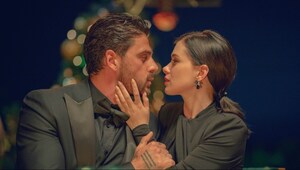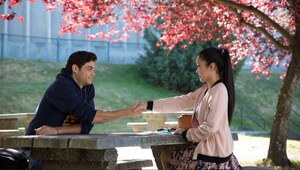Into the Wild: 4 Women Wildlife Photographers Share the Story Behind Their Favourite Clicks
Pictures don’t just showcase the natural beauty that the wildlife is brimming with, but also the man-made dangers that are lurking in its midst...

"A thing that you see in my pictures is that I was not afraid of falling in love with these people." Annie Leibovitz
Speaking to these amazing women wildlife photographers who have braved all kind of frontiers for a single click, here's what it took to get their favourite picture.
Aarzoo Khurana

“I am a big fan of photographic storytelling, and try to capture the wild in its most natural settings. Wildlife photography is my way of acting as a bridge between the insides of the woods and the outer world. Baby animals, especially langurs and deer, are my favourite subjects. They are curious and adorable—peeping out, tumbling over, unmindful of all the dangers around. A few years ago, I clicked a photograph of a baby deer and a blackbird in the Ranthambore Tiger Reserve. The blackbird called Drongo kept hovering over the fawn, and eventually landed on its nose and started pricking it. The poor baby kept trying to shoo her away. Interestingly, the viewer tends to assume that the two were friends. However, on the contrary, the fawn was actually really irked and just wanted Drongo to let it be! That has got to be one of my favourite images of all time. Wildlife photography is extremely challenging, both physically and mentally. There is a lot of travel involved. Besides, we leave for safaris early mornings, and the temperature inside the forest is usually extreme...during winters, the mornings are freezing, and in the summer, noons are scorching. And, you have to work with heavy gear for long hours. For me, it was a task to convince my parents, too. Initially, they were very uncomfortable with me going off to remote areas and venturing into the forests. Now they are warming up to the idea and have made their peace with the fact that wildlife photography is an integral part of my life.”
Aishwarya Sridhar

“I grew up with wildlife in my backyard, in the lush environs of Panvel [Maharashtra] with wild boars outside my home and fireflies on my balcony... By the time I was eight, my father began taking me along for his jungle treks and birding expeditions. There were many wetlands nearby, and my first few photographs were of flamingos in these wetlands. For my 11th birthday, my dad gifted me a point-and-shoot camera, and that is when I began experimenting with wildlife photography. I love working with everything that creeps, crawls, walks, swims, or flies. The visual medium is powerful and I want to harness its transformative powers to influence minds and inspire change. I think the message I want to convey through my images and films is that Mother Nature is not only beautiful, she is also an integral part of our web of life...so we must protect and preserve her if we value our own survival. Over the last decade, I have watched tracts of marshes disappearing under the concrete. This has displaced thousands of resident and migratory birds as well as affected livelihoods of local fishermen. The trade in wildlife contraband is driving certain species to extinction, too. To me, all of this is extremely alarming! I am relatively new, and to have my work stand out among the veterans has been tough...I still have to prove myself every single day. Men can also be a tad misogynistic in this profession—they find it difficult to listen to a woman, especially if she is younger than them. I remember having a tough time with a drone operator, once, who even took to slandering me on social media! But there are a lot of others who inspire me endlessly, too—both men and women. Jane Goodall, Rathika Ramasamy, and Kalyan Verma, for instance, make me want to be better every day.”
Latika Nath

“My love affair with wildlife photography began when I was just a baby and would watch my father and his friends take photographs in the forests we regularly visited. I don’t remember the first time I ever took a picture, but I do have some vague memories of carrying a Rolodex camera and photographing the Gurez Valley, when I was about six. However, I began documenting it seriously when I got a Research Fellowship at the Wildlife Institute of India and started studying tigers in the wild. I have been a wildlife biologist for over 30 years now, and anything to do with nature fascinates me. I travel all over the world to study and photograph birds, animals, the underwater life, and various other species. My photographs tell a story—it could be about the animal or the habitat, or a record of an event or a behaviour, but it is invariably a story that lends itself towards creating information to support the conservation of the species. The best part about being a wildlife photographer is that you get to see the little details of animal behaviours and form an intimate relationship with the subject. You learn to differentiate between characteristics and moods, predict reactions, read the change in their thought by just looking into their eyes... The other wonderful thing is to be able to look back at the photographs and notice newer things that you may not have seen earlier. I have an endless list of species I want to meet and photograph. Like the legendary Narhwal whales, the spirit bear in Canada, Siberian tigers, jagarundi in Brazil, shoebills of Africa, and bonobo in the Congo. But most of all, I would like to see a black tiger—a mystical beast I have forever longed to photograph.”
Rathika Ramasamy

“I have been a wildlife photographer for the last 17 years. I specialise in bird photography, but I love to shoot mammals like elephants and the big cats as well. To me, other than being a passion, it is also a medium to connect with nature. Being in the wild, encountering animals at such close quarters, waiting in anticipation, and finally capturing that moment is all extremely exciting. I believe, in a way, wildlife photographers are also the ambassadors of these wildlings—we get a chance to give voice to the voiceless. Our photographs help spread awareness about wildlife and the need for its conservation; and images depicting important issues, like damages being done to the environment, make common people stand up and take notice...even act. Wildlife photography is a tough job, though. And I feel this genre of photography in India is still at a nascent stage. So it is a huge challenge to get sufficient financial support for sustenance, especially in the beginning...it is not as lucrative as fashion or wedding photography. Also, there are some harsh, on-ground realities that you just can’t overlook. Several species of animals (like tigers) and birds (like vultures) have become endangered. Some others are near extinction. Wildlife needs a safe habitat to survive. Unfortunately, deforestation, indiscriminate mining, industrial activities, electrocution, road accidents, pollution, and destruction of water bodies and wetlands, are all wrecking natural habitats. Poaching is another major issue. So is the man-animal conflict—when humans encroach into the animals’ territories or intrude into the corridors they use to search for food and water. That is when our paths cross, adversely—like the cases of elephants crossing into tea plantations or farms, etc. Thus, it is important to educate ourselves on how critical wildlife is for human survival too, and we must learn to coexist with them in harmony.”
more from Life

Finding healing and hope through crochet

Can a sunshine folder help cure your imposter syndrome?

Make summer 2024 hotter with these steamy reads

How to build emotional intimacy with your partner

Sex tips to keep in mind during this Mercury Retrograde

What is intuitive eating and how is it different from other diets?

What the first trip with your partner says about your relationship

Everything you need to know about the "Who is Your Chicago?" trend

#AskTheTherapist: ‘Should I break ties with my toxic sister?’

How skincare date nights with boo can bring you closer
